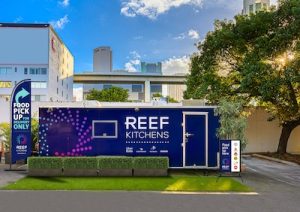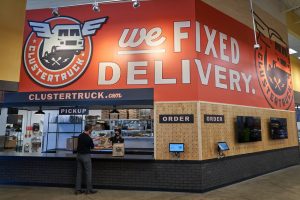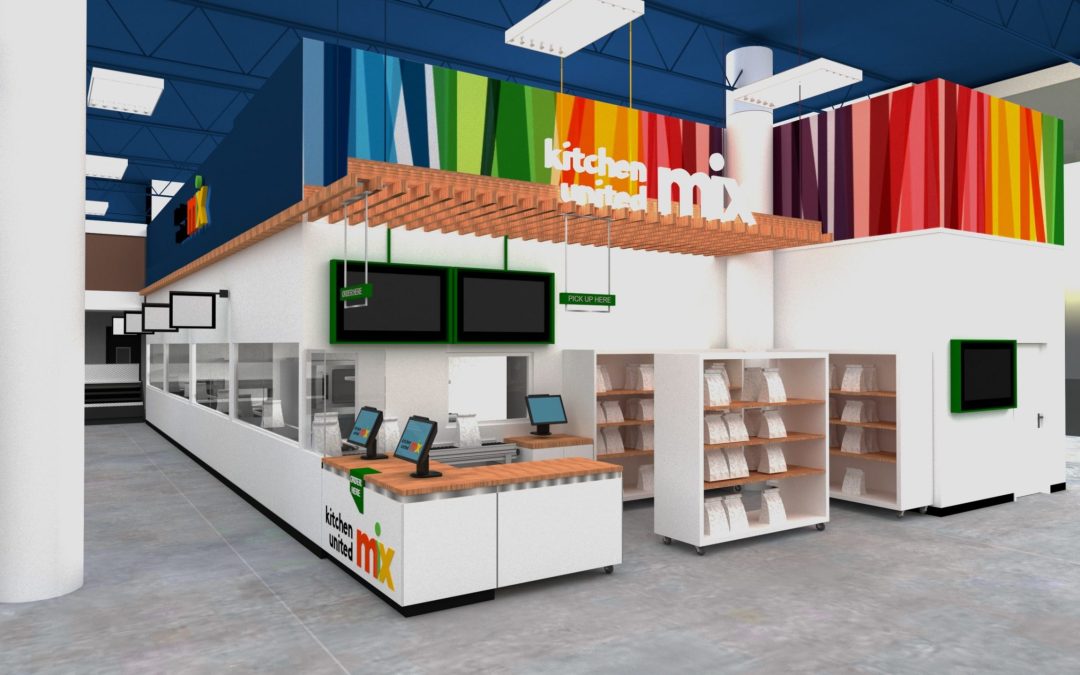Meredith Sandland is co-author of “Delivering the Digital Restaurant: Your Roadmap to the Future of Food” and “Delivering the Digital Restaurant: The Path to Digital Maturity.” Meredith is the CEO of Empower Delivery, software that powers off-premise-centric restaurants. Empower Delivery is an offshoot of ClusterTruck.

Empower Delivery CEO Meredith Sandland
To grow, restaurants have to make money. If they are profitable at the unit level, they replicate. In replication, they will go through the “J-curve” spending capital to build out additional locations until they finally generate more cash than they put to work. Depending on the concept, the speed of growth and the use of franchising, restaurant chains start self-funding their own growth somewhere between unit 30 and unit 100.
Restaurants are sensitive to interest rates because the payback period on a typical restaurant is 3-5 years. When interest rates are lower, they grow quickly. When interest rates are higher, they grow more slowly. But regardless of the interest rate, no one puts capital behind a restaurant concept that does not make money at the unit level.
It turns out that ghost kitchens are restaurants. They are a different kind of restaurant, for sure. But they are restaurants—real brick-and-mortar spaces with real capital expenditure requirements, making real food with real ingredients by real employees. They have unit-level profitability expectations, just like every other restaurant.
 During the initial rush of excitement about delivery, further fueled by an accelerated consumer pandemic adoption of all things digital and contactless, the promise of ghost kitchens made so much sense. Asset-light expansion? Check. Footprint optimized for off-premise? Check. Tech-enabled? Check. Coupled with low interest rates, investors could afford to put capital to work without a known business model, hoping that smart people would figure out positive unit-level economics before they run out of funding runway.
During the initial rush of excitement about delivery, further fueled by an accelerated consumer pandemic adoption of all things digital and contactless, the promise of ghost kitchens made so much sense. Asset-light expansion? Check. Footprint optimized for off-premise? Check. Tech-enabled? Check. Coupled with low interest rates, investors could afford to put capital to work without a known business model, hoping that smart people would figure out positive unit-level economics before they run out of funding runway.
For most of these businesses, time and money ran out. Interest rates increased faster than most ghost kitchens’ ability to settle into profitability. One profitable model remains: vertically-integrated delivery kitchens, which control the brand, the ordering, the operations, the physical space and the delivery. Sound familiar? It should—it’s a pizza delco (delivery/carryout). It just happens to serve other types of cuisine and it is called ClusterTruck. ClusterTruck, started in 2016 before all the others, was almost immediately profitable. The cutting-edge technology it uses leads to lower labor costs, lower delivery costs, lower customer acquisition costs, higher customer LTVs…all leading to higher profitability.

Kroger launches on-premise ghost kitchens in partnership with Midwest start-up ClusterTruck. The first location opens today in Fishers, Indiana.
What is ClusterTruck doing differently from all the other failed attempts at a ghost kitchen? Vertical integration is key. First, there are fewer mouths to feed compared to a complex system where a company with real estate, a company with buildout, a company with brand, a company with operations, a company with delivery, and a company with technology all need to make money in an already low-margin business. Second, the obfuscation created by all this complexity allowed all players in the system to move money around in a leaky bucket (for a time) while ClusterTruck’s own bucket just retained the actual profits. Third, without the complex system, ClusterTruck is able to more efficiently produce and deliver food that thrills guests without the friction of third party delivery. Finally, their technology, Empower Delivery, now spun out into a separate company for other restaurants to use, enables both the vertical integration and the efficiency.
Finding that their complex ghost kitchens built on others’ businesses were not hitting unit-level economics targets, nearly every other major ghost kitchen has pivoted to become…not a ghost kitchen. VDC has Topanga Social. Kitchen United had its Mix food hall. C3 has its Citizens food halls. Reef put a food hall in the Raleigh-Durham airport. CloudKitchens has placed ordering kiosks in their lobbies. All of these ideas rely on consumers coming to food rather than the original idea of optimizing a location for food to go to people. In this shift, ghost kitchens started to even more closely resemble restaurants, serving delivery as an incremental revenue stream out of a primarily on-premise business. Restaurants have struggled with this “incremental” mindset, adding complexity and cost to their businesses instead of the incremental profit they were promised. Ghost kitchens struggled with the incremental mindset, too. Now, with multiple masters to serve, unit-level profitability seems farther away, not closer.
 The physical example of complicated ghost kitchen models built on a house of cards is easier to understand than the complicated software counterpart, which is also rampant in the restaurant industry. The last five years have seen an explosion in restaurant software, with each bit trying to solve a unique problem or unleash a unique feature. Just as most ghost kitchens were a byzantine combination of business models, so too is most restaurant software. A typical digitally-advanced restaurant is running 15-20 different pieces of software to make their system go. This software complexity is as tenuous as the brick-and-mortar complexity is. Restaurants need to stop buying additional software band aids that solve the wrong problems. Each new band aid adds a feature or fixes a pain point of the last bandaid while generating software profit as a priority, instead of solving the underlying problems in the restaurant model. Restaurants need to buy holistic software that just…works.
The physical example of complicated ghost kitchen models built on a house of cards is easier to understand than the complicated software counterpart, which is also rampant in the restaurant industry. The last five years have seen an explosion in restaurant software, with each bit trying to solve a unique problem or unleash a unique feature. Just as most ghost kitchens were a byzantine combination of business models, so too is most restaurant software. A typical digitally-advanced restaurant is running 15-20 different pieces of software to make their system go. This software complexity is as tenuous as the brick-and-mortar complexity is. Restaurants need to stop buying additional software band aids that solve the wrong problems. Each new band aid adds a feature or fixes a pain point of the last bandaid while generating software profit as a priority, instead of solving the underlying problems in the restaurant model. Restaurants need to buy holistic software that just…works.
In this difficult funding environment, Empower Delivery just secured another round of investment. Why? Our investors believe in the demonstrated unit-level economics of ClusterTruck. They see it and know the model will proliferate. Our investors see the simplicity of our software. They are software investors, and recognize a well-made product that can achieve the remarkable outcomes restaurants have been dreaming of: a shift to an ecommerce mindset made possible by knowing each and every customer and their behavior.
Delivery growth has slowed, but the demand for delivery remains strong. Consumers want the convenience, and they have demonstrated a willingness to pay for it. There is a way to serve the delivery occasion profitably, in a brand-enhancing way that consumers love. Ghost kitchens may not have made it to a replicable model, but delivery kitchens have. ClusterTruck has had success because of a commitment to offer a superior experience, higher food quality and lower overall costs. Other delivery kitchens, like OOMI Digital Kitchen, are doing it too. There may be one near you already. If not, there will be soon.


